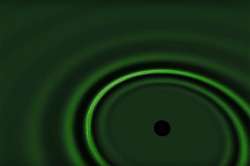Observatory to study gravitational waves to come up in Maharashtra
In efforts to study the cosmic gravitational waves, Maharashtra, Chief Minister Devendra Fadnavis on Tuesday announced the Laser Interferometer Gravitational Wave Observatory (LIGO) which will come up in Hingoli district. The LIGO — part of

In efforts to study the cosmic gravitational waves, Maharashtra, Chief Minister Devendra Fadnavis on Tuesday announced the Laser Interferometer Gravitational Wave Observatory (LIGO) which will come up in Hingoli district.
The LIGO — part of a collaboration between India and the US is a large-scale physics experiment and observatory to detect cosmic gravitational waves in the universe.
It would develop gravitational wave observations as an astronomical tool and will be the third such observatory in the world, Fadnavis said, after a special cabinet meeting held here.
“Hingoli has been chosen for the LIGO-India observatory and laboratory, for which the state government will provide the land,” Fadnavis added.
The project was first cleared by the centre after an ‘in principle’ clearance accorded in February for a gravitational wave detector facility in India, after Indian and foreign scientists had detected gravitational waves from deep space by LIGO detectors in Washington and Louisiana, US.
The LIGO-India will be piloted and overseen by the Department of Atomic Energy and Department of Science and Technology.
The LIGO-India shall be coordinated and executed by three leading research institutions – Pune’s Inter-University Centre for Astronomy and Astrophysics (IUCAA), Indore’s Raja Ramanna Centre for Advanced Technology (RRCAT) and Gandhinagar’s Institute for Plasma Research (IPR).
While IUCAA will provide the scientific teams, data acquisition and scientific data computation, RRCAT will provide its expertise in lasers and laser technology, while IPR will contribute in the high vacuum and cryogenic systems for the prestigious project.
The project will deploy cutting-edge technology for the Indian industry which will be engaged in building an 8 km long beam-tube at ultra-high vacuum on a levelled terrain.
According to LIGO-India, gravitational waves are predicted as an essential element of Albert Einstein’s Theory of General Relativity.
The strongest sources of gravitational waves are among the enigmatic objects in our universe like black holes, neutron stars, supernova and even the Big Bang.
Extracting the information transmitted by the waves to address questions of physics and astronomy would depend on our ability to identify the individual sources of these waves.
This requires a network of detectors spread over Earth and LIGO already operates two sites in the US besides collaborating with a similar detector in Virgo, Italy.
LIGO-India will enable scientists to locate sources over the entire sky and the ellipses on the sky maps indicate how much more accurately sources can be found with the Indian facility.
(With inputs from IANS)